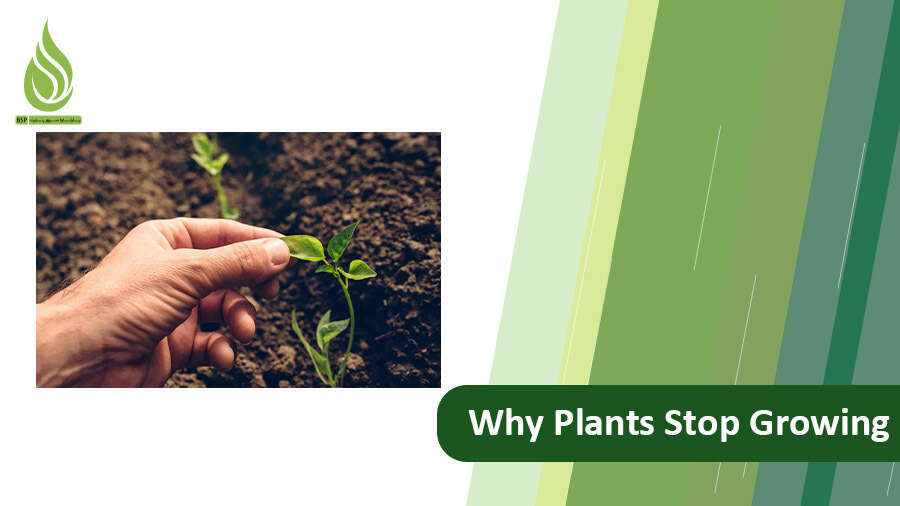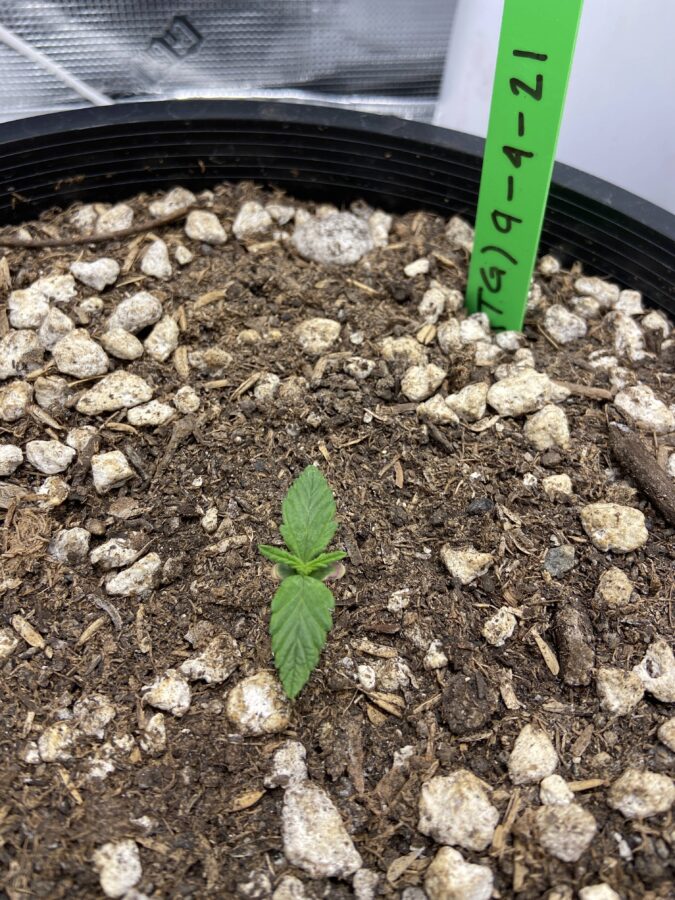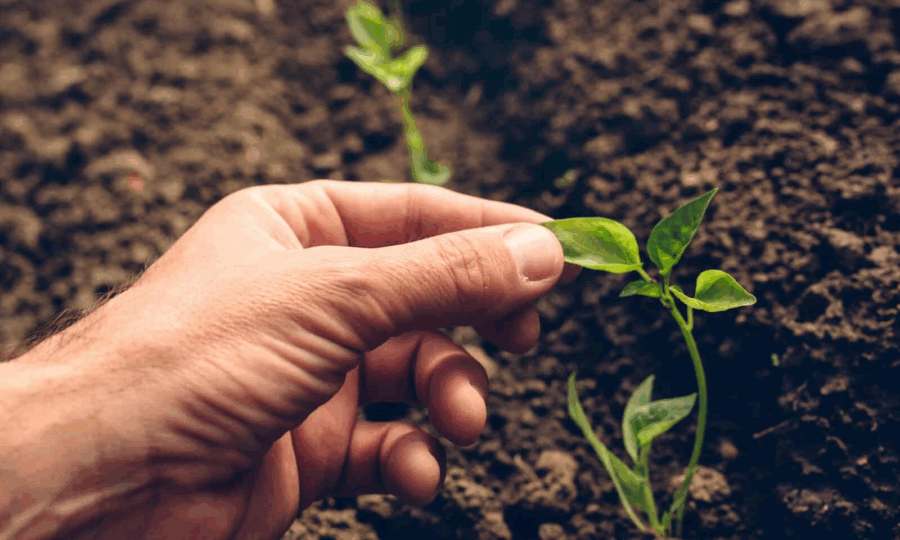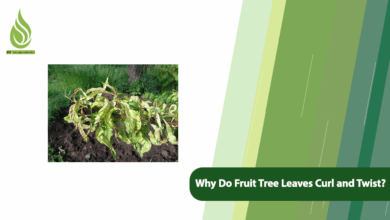
Why Plants Stop Growing? Science-Backed Reasons & Solutions
Stunted plant growth is a common challenge for farmers and plant enthusiasts alike. When a plant stops producing new leaves, fails to grow taller, or doesn’t flower, it’s likely facing issues with its environment or nutrition. In this article, we’ll explain why would your plants stop growing and how to provide science-backed solutions for each problem. Let’s dive in!
How to Tell If Your Plant’s Growth Has Stopped
Plant growth is a top concern in farming and gardening. Sometimes, plants stop growing due to various factors, which can harm their health and reduce yields. However, stalled growth isn’t the end of the road—it’s a warning sign. By identifying the cause and applying the right solutions, you can help your plant resume healthy growth. Whether you’re tending to garden plants or houseplants, three key factors—understanding your plant’s needs, patience in correcting conditions, and consistent care—are essential for vibrant, thriving plants.

Here are the main signs that a plant’s growth has stalled:
- No Change in Size: If your plant isn’t producing new leaves or its leaves remain small, this is a clear sign of stunted growth. Similarly, if the stems don’t elongate after several weeks, growth has likely stopped. To track stem growth, measure the height of the stems monthly.
- Unusual Leaf Changes: If older leaves turn yellow without new ones replacing them, or if new leaves are small, curled, or misshapen, your plant may be experiencing growth issues.
- Lack of Flowering or Fruiting: If your plant fails to produce flowers or fruit during its expected season, something is wrong.
- Other Signs: Look for thin or short new leaves, buds that don’t open, excessive leaf drop without new growth, thinning stems, or roots that stop expanding. These are all potential indicators of stalled growth.
Why Plants Stop Growing and How to Solve This Problem?

Unsuitable Environmental Conditions
Plants need specific environmental conditions to thrive, and these requirements vary by species. That’s why some plants flourish in the southern regions but struggle in northern or mountainous areas, and vice versa. Depending on the plant you’re growing, you must provide the right light, temperature, humidity, and growing medium. For example, if a plant is sensitive to shade, it should be placed in an area with direct sunlight, free from overshadowing trees. All plants need light, but the amount varies. Placing a plant in an area with inadequate light will halt its growth.
The same applies to temperature and humidity. Each plant has unique needs for these factors. If a plant requires high humidity but is grown in a dry environment, it won’t thrive. Before anything else, ensure the growing environment is suitable for your plant’s needs.
Lack of Water
Water is essential for nutrient exchange and maintaining a plant’s cellular structure. Insufficient water can cause wilting and stunt growth. Improper watering can either suffocate or dry out roots, and damaged roots struggle to absorb nutrients and water, leading to stalled growth. The solution is to water according to the plant’s needs and the season. Check soil moisture before watering, and ensure proper drainage in the soil or pot to prevent waterlogging.
Planting at the Wrong Time
The timing of planting significantly affects a plant’s growth. Planting in the wrong season can result in stunted or weak growth because unsuitable environmental conditions, such as soil or air temperature, prevent the plant from thriving. If you plan to plant in the fall, ensure the plant is suited for fall planting. For potted plants, only repot during the appropriate planting season, not whenever you feel like it. Also, avoid frequently moving the pot, as this can stress the plant.
When taking a cutting from a plant, place it in an environment similar to its original conditions. Drastic changes can shock the cutting and halt its growth. If the plant’s roots are in poor conditions, such as being cramped and tangled in a small pot, repot it to give the roots room to grow.
Plants Stop Growing Because of Poor Soil Conditions
Soil quality directly impacts plant growth. Poor soil can prevent plants from absorbing nutrients and water effectively. Heavy, oxygen-poor soil can suffocate roots, while overly light soil may lose water and nutrients through leaching. Improving soil structure and texture is critical for boosting plant health. Use organic plant or animal-based fertilizers to enhance soil quality and create optimal conditions for growing various plants.
Another key factor is soil pH, which indicates whether the soil is acidic, alkaline, or neutral. Planting in soil with an unsuitable pH can limit or stop your plants from growing. You can determine soil pH through a soil test and, if needed, adjust it using pH control methods to create the ideal environment for your plants.
Nutrient-Poor or Unsuitable Soil
Plants require nutrients to grow, which they absorb from the soil. Over time, continuous use of land depletes the soil of essential elements, making it nutrient-poor. If the soil lacks nutrients or was of poor quality to begin with, plants will gradually weaken and stop growing. To address this, you can restore nutrients using organic and mineral fertilizers.
Plants need two types of nutrients: macronutrients and micronutrients. A deficiency in either can cause issues like yellowing leaves, poor root growth, weak stems, and more. To prevent nutrient deficiencies and ensure proper soil nutrition, conducting a soil test is essential.
In a soil test, samples are collected and analyzed in a lab to determine which nutrients are lacking and in what amounts. Be cautious, as over-fertilizing can harm plants, leading to toxicity, leaf burn, or even plant death. Excessive fertilization is a common cause of stunted growth. To avoid these issues, maintain a balanced approach to fertilizing.
Lack of Space for Growth
One often-overlooked factor is insufficient space for plant growth. For potted plants, ensure the pot size is appropriate for the plant. For agricultural crops, maintain proper planting distances.
In potted plants, as roots grow larger, they can become cramped and tangled if the pot is too small, which may suffocate the roots and damage their structure. To prevent this, check annually whether the plant needs repotting into a larger container.
Presence of Pests and Diseases
Pests and diseases can harm plants in various ways. Some pests damage roots, while others attack stems or leaves, leading to plant death or stunted growth. Once pests establish themselves near a plant, they feed on its components, depleting the plant’s resources. This leaves the plant unable to grow or maintain its health. To prevent this, regularly inspect your plants. Check both sides of the leaves and other parts of the plant to detect pests early and control them before they spread.
Plants Stop Growing Because of Weeds
Weeds, much like pests and diseases, compete with plants for essential resources, causing nutrient and water shortages. Some weeds also release chemicals that harm nearby plants. To ensure healthy plant growth, promptly remove weeds from the soil to prevent them from interfering with your plants’ development.
General Solutions for Reviving Plants

In this article, we’ve explained the reasons behind stunted plant growth and provided solutions for each issue. Whether you’re caring for garden or potted plants, the tips covered here apply to all types of plants. Below is a concise summary of general solutions to address stalled plant growth.
To revive plants and promote healthy growth, follow these steps:
- Use nutrient-rich, well-draining soil.
- Ensure proper light and ventilation for your plants.
- Water plants according to a consistent schedule.
- Recognize signs of nutrient deficiencies.
- Fertilize in moderation, only as needed.
- Monitor and control pests and diseases.
- Provide enough space for root growth.
- Apply fertilizer during watering to improve nutrient absorption.
- Spread fertilizer evenly over the soil surface.
- Prune dry or dead leaves.
- Regularly inspect plants for signs of pests or diseases.
By following these guidelines, you can help your plants return to a state of healthy growth and vitality.
